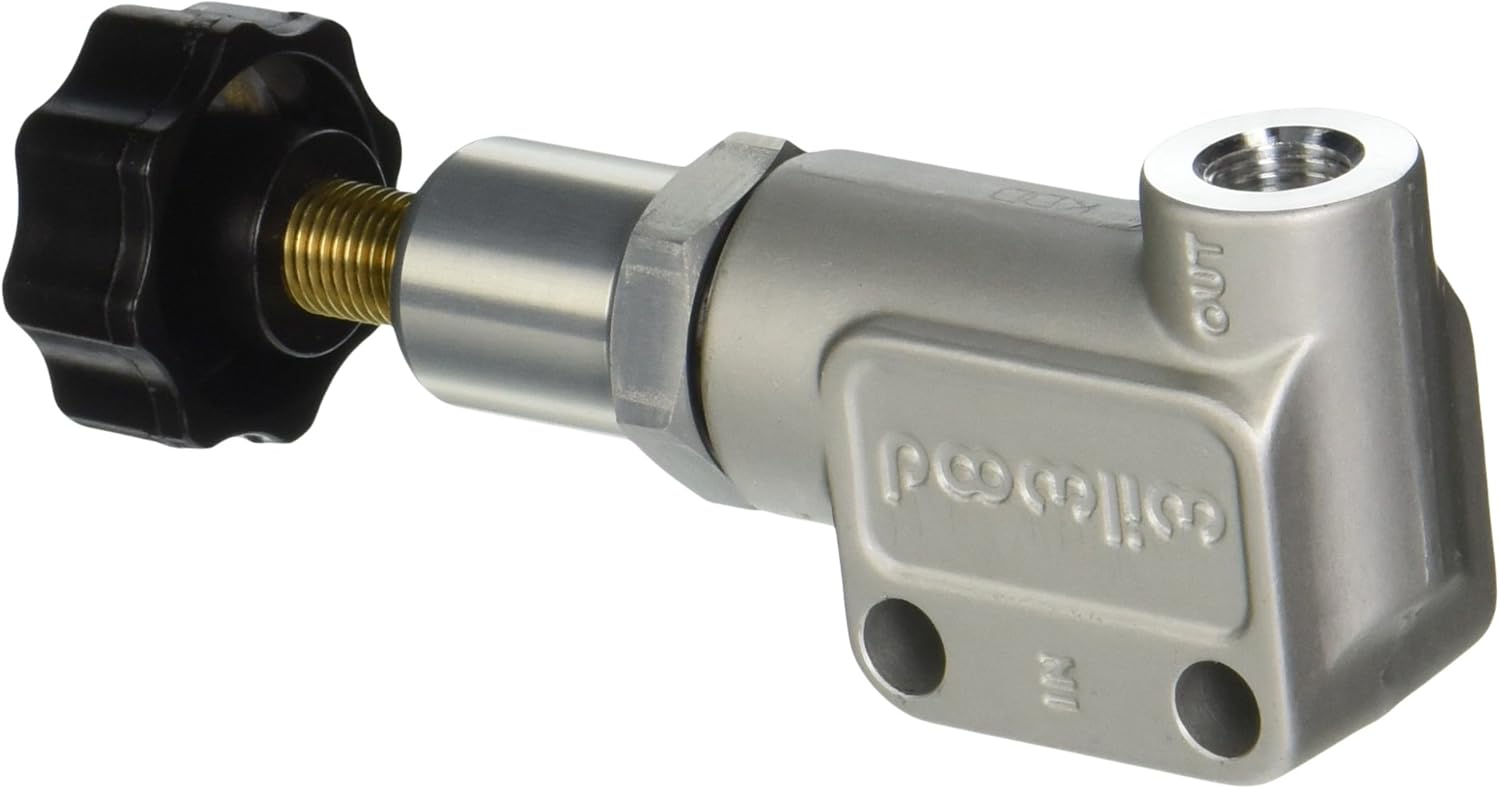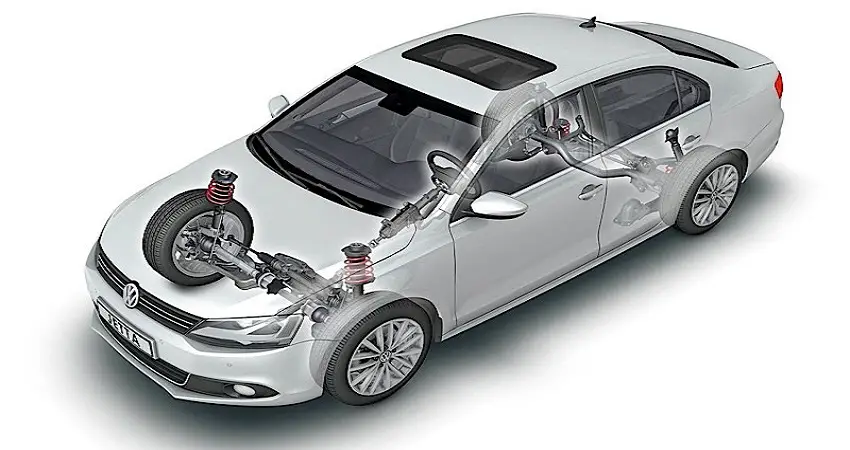Last Updated on January 12, 2024 by John Robinson
A proportioning valve is essential for vehicles that have disc brakes on the front and drum brakes on the rear wheels. While the pads of the disc brakes are always in contact with the disc, the pads of the drum brakes do not normally contact the drum. If the brake proportioning valve does not adequately regulate the pressure, the disc brakes would act before the drum brakes when you put force on the braking pedal.
A proportioning valve serves to engage the drum brakes first so that the faster-acting disc brakes act later. The action of the proportioning valve prevents any extra pressure to the disc brakes until a requisite amount of pressure has been attained. This requisite pressure is quite low in comparison to the maximum pressure required in a braking system. The prior engagement of the rear brakes provides the desirable control and stability that would effectively stop your vehicle. So what happens when the brake proportioning valve gets stuck? How to unstick a brake proportioning valve?
The functioning of this valve is essential for normal braking and for adequate levels of safety for your vehicle. It is integral in stopping the flow of brake pressure fluid to the rear drum brakes during intensive braking. The brake proportioning valve can get stuck at either one end of the valve body. You will have to step through a specific procedure to make them free and functional.
How To Unstick A Brake Proportioning Valve?

Put your automatic transmission vehicle in park. If you have manual transmission, put it in neutral. Once you’ve applied the emergency brakes, unscrew the master cylinder cap and fill the brake fluid up to the top. Raise the vehicle from the front and the rear portions.
Note whether the brake light comes on when you push the brake pedal. Your brake proportioning valve may be stuck in one position. Use a flare nut wrench to work on the brake bleeder valve. Let the brake fluid exit once you loosen the brake bleeder. The process must be repeated until you stop seeing air bubbles.
All wheels of your vehicle must be subjected to the same test so that all the air escapes. You must fill your master cylinder with brake fluid and then bleed the right front bleeder valve. Your dash light must go out by now.
Otherwise, you’ll have to assess the proportioning valve. It is essential for the proportioning valve to have a clean connection. You can then utilize your flare nut wrench on the rear cap nut. The dash light must go out after some medium-level application of pressure on the brake pedal.
Replace the flare nut wrench on the front brake line cap nut. Use the wrench to make this cap loose and then press the brake pedal. The spool inside the proportioning valve would break loose on the reversal of pressure.
What are the symptoms of a failed brake proportioning valve?
Some early signs can provide you clues about a developing problem before it actually compromises the safety of your vehicle.
-
Note whether your rear wheels lock up
The purpose of a proportioning valve is to reduce the pressure in the rear brakes. It should be considered an alarm when the rear wheels begin to lock up on the application of brakes. You’ll notice that the wheels will lock up even faster on wet surfaces. It is possible for the rear brakes to feel touchy even upon the gentle press. You need to contact a professional mechanic for help as soon as you find that your rear wheels are locking up.
-
Test the issue on your own
You can conveniently test the situation on your own and gauge its gravity. This can be easily attempted in some empty parking lot with one extra person to help. Make sure that the other person is standing at a safe distance.
Now drive your car and make some medium to hard stops. Be careful to press the brakes tightly and several times to make an emergency stop. The other person will not if the rear wheels lock up while the front wheels are normally turning. This indicates a problem with the proportioning valve. However, you must be extremely careful while performing this test.
-
Note The Importance Of Your Brake Proportioning Valves

The braking system of your vehicle is quite detrimental to your safety. The complexity of your car’s braking system must be regarded and availed all the necessary care. While all components of your braking system are truly important, the proportioning valve and the pressure differential valve serve a very critical purpose.
The proportioning valve is also referred to as the equalizer valve. It is located between the master cylinder and the back wheels. Its purpose is to maintain the pressure between the front and the rear brakes. This balance is thoroughly affected by the force with which you apply the brakes. No matter how hard you stop, the proportioning valve ensures that your safety is maintained. This is found in all vehicles that utilize front disc brakes and rear drum brakes.
The working of this valve assures that equal force is applied on both sides so that the vehicle is balanced during the stop. This task is fairly achieved by decreasing the hydraulic pressure in the rear brakes. The adequate functioning of the brake proportional valve is essential in preventing the rear brakes from getting locked.
In such an eventuality, you could easily lose balance. So whenever you notice a locking up tendency in your back wheels, there lies a chance of a problem in your proportioning valve.
The pressure differential valve is another reliable safety feature of your vehicle. Located below the master cylinder, this component calculates the pressure inside the two parts of the master cylinder. Both parts of the master cylinder are equipped with different sets of brakes.
Ideally, the pressure on both sides should be equal. All of your brakes should be supplied with the same amount of pressure. A special piston in this valve remains centered as long as the pressure between the halves is maintained.
As soon as the pressure alters, this piston shifts. The valve shuts down and completes one leg on an electrical circuit. This circuit then switches on the check engine/check brake light on your dashboard.
The common causes of such inequality in pressure include over-aerated brake fluid or a leak in the brake line. It is recommended that you seek expert help when your brake light comes on.
-
Note the importance of seeking professional help

It is very important for you to depend on qualified mechanics and professionals in solving the problems in your braking system. If you are inexperienced and simply following a guide on the internet, you might end up destroying a system that could have been easily repaired. So when your check brake light comes on, your first step should be to find a way to safely stop your vehicle.
You must not take your vehicle out for a drive until the issue has been properly corrected. Only a proper mechanic would know the intricacies of your braking system. Considering the importance of the braking system in the overall safety of your vehicle, it is very important that you don’t take any chances.
Under no circumstances should you attempt such a procedure without expert guidance. This might result in a dangerous brake failure. Any problem in the operation of brakes could turn fatal. To be fair, the procedure of unsticking a brake proportioning valve is best left to professionals.
Conclusion
It will be best if you take your vehicle to a professional as soon as you notice an issue with your proportioning valve. While you can conveniently test the functioning of this component on your own, it is not a good idea to try and fix the problem all by yourself.
The solution for this problem requires specialized tools. Moreover, a professional will be able to recognize other flaws that may escape your eye. The brakes of your vehicle are integral to its safety. There is no way you can compromise your safety on the road.
If you notice that your rear wheels lock up, especially on wet surfaces, you must get your brake system checked by a qualified mechanic. Also, be careful while driving the vehicle that is showing such symptoms.
The proper functioning of the brake proportioning valve will assure the right stops for your vehicle at the right moments. Assure your own safety and the well-being of your loved ones by getting such issues repaired in time.
Maintain the best standards of safety by getting your vehicle analyzed for such an issue. Nobody can solve this problem better than a professional. Get this problem checked on time and don’t drive your vehicle until the issue has been repaired. Your vehicle’s braking system is the key to your safety.
[su_youtube url=”https://youtu.be/S11p2Isgmu4″ width=”800″ height=”460″]


